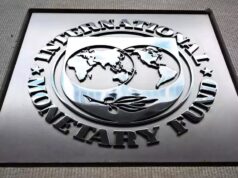
(3 Minutes Read)
Exclusive communities catering to the ultra-rich have mushroomed worldwide, from the US to Brazil and the United Arab Emirates. New World Wealth predicts that by 2050, over half of the world’s center-millionaire population will reside in or own second homes in lifestyle estates.
Despite a 20% decline in South Africa’s millionaire population over the past decade, it remains a hub for the continent’s high-net-worth individuals, according to the Henley & Partners’ Africa Wealth Report. Meanwhile, government data show that roughly half of the 63-million-strong population lives in poverty, relying on at least one monthly welfare payout.
Housing stock in estates — of varying degrees of luxury — is the fastest-growing segment in the country’s residential property market, according to Lightstone. There are almost 490,000 homes in such developments, a fourfold increase since 2003, the real estate data firm said. Estate living emerged around three decades ago when developers financed golf courses by adding properties within secure perimeters, creating a sense of community based on shared values and lifestyles, said Andrew Golding, chief executive of Pam Golding Property Group. While it is natural for people to prioritize their families’ safety when “the government is not fulfilling its mandate to look after your safety and security.
This phenomenon is not unique to South Africa. Exclusive communities catering to the ultra-rich have mushroomed worldwide, from the US to Brazil and the United Arab Emirates. New World Wealth predicts that by 2050, over half of the world’s center-millionaire population will reside in or own second homes in lifestyle estates.
Read Also:
https://trendsnafrica.com/south-africa-to-host-g20-summit-in-2025-takes-over-its-presidency/
Competition in the luxury market has prompted estates to adopt cradle-to-grave strategies, introducing amenities like kindergartens, medical and senior living facilities, and office parks, minimizing the need for residents to leave their enclaves.









